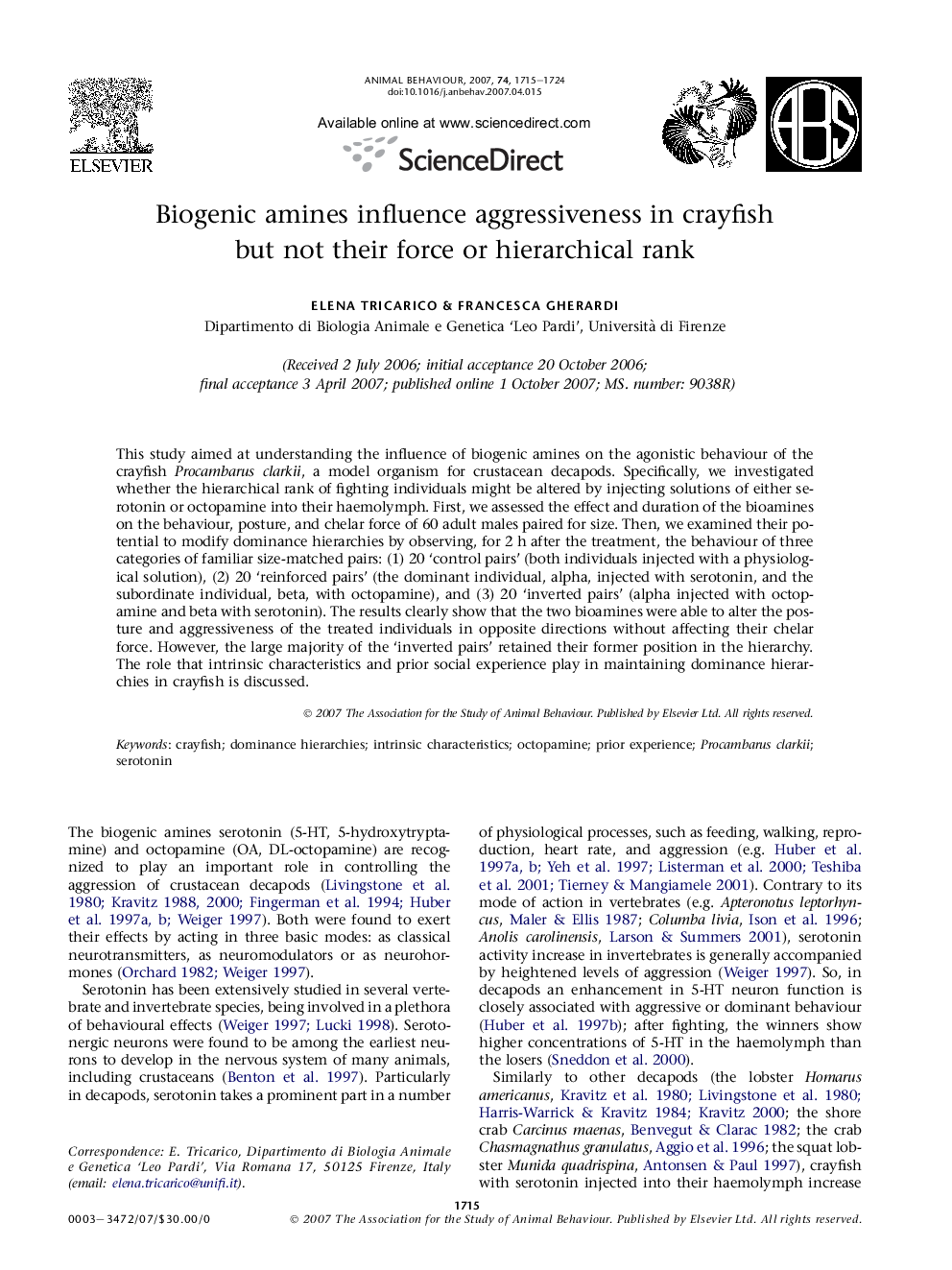| Article ID | Journal | Published Year | Pages | File Type |
|---|---|---|---|---|
| 2418110 | Animal Behaviour | 2007 | 10 Pages |
This study aimed at understanding the influence of biogenic amines on the agonistic behaviour of the crayfish Procambarus clarkii, a model organism for crustacean decapods. Specifically, we investigated whether the hierarchical rank of fighting individuals might be altered by injecting solutions of either serotonin or octopamine into their haemolymph. First, we assessed the effect and duration of the bioamines on the behaviour, posture, and chelar force of 60 adult males paired for size. Then, we examined their potential to modify dominance hierarchies by observing, for 2 h after the treatment, the behaviour of three categories of familiar size-matched pairs: (1) 20 ‘control pairs’ (both individuals injected with a physiological solution), (2) 20 ‘reinforced pairs’ (the dominant individual, alpha, injected with serotonin, and the subordinate individual, beta, with octopamine), and (3) 20 ‘inverted pairs’ (alpha injected with octopamine and beta with serotonin). The results clearly show that the two bioamines were able to alter the posture and aggressiveness of the treated individuals in opposite directions without affecting their chelar force. However, the large majority of the ‘inverted pairs’ retained their former position in the hierarchy. The role that intrinsic characteristics and prior social experience play in maintaining dominance hierarchies in crayfish is discussed.
